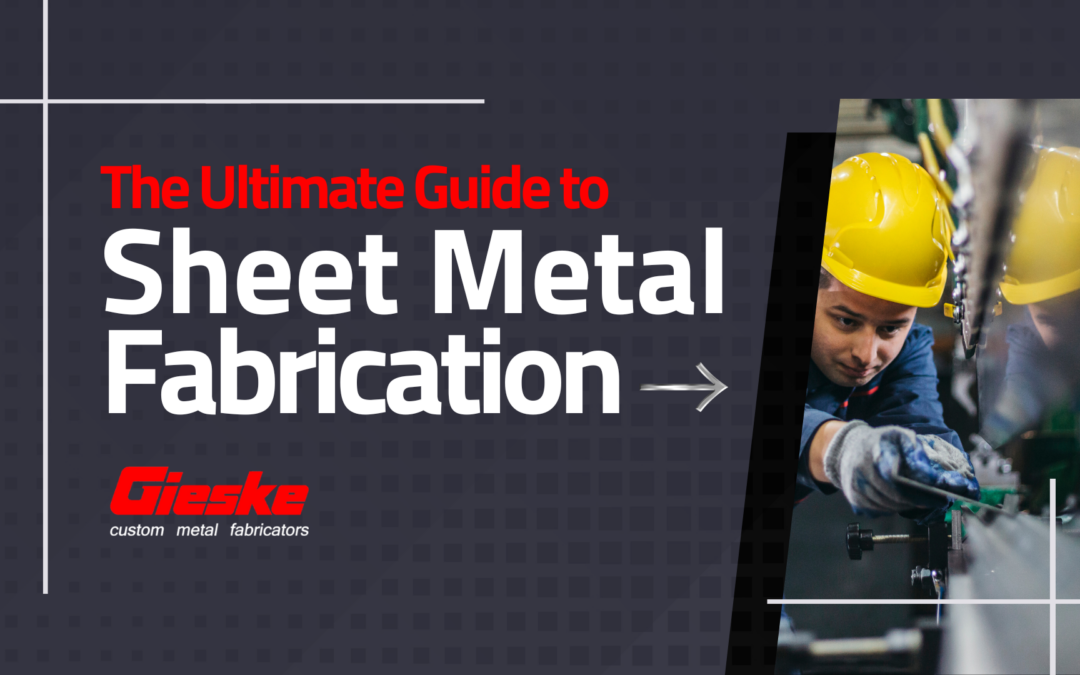Sheet metal fabrication is an extensive and versatile manufacturing process that includes many steps and techniques to create the perfect piece. If you have a new project coming up, getting to know the details and technology behind it can help you narrow down if it is the right choice for you. So, we have created an all-in-one guide for all your sheet metal fabrication needs.
How Does Sheet Metal Fabrication Work?
In its basic form, sheet metal fabrication is the cutting and forming of metals to create a final product. While there are many ways to do both of these things, sheet metal fabricators need to understand every technique available to them to make the end product as perfect as possible. It all starts with metal and a blueprint. The experts create the blueprint and provide instructions on cutting, forming, finishing, and joining the piece together.
The Different Cutting and Forming Methods
Cutting is one of the first steps to sheet metal fabrication, but there are two main categories of theory: with and without shear forces. When discussing cutting without shear, we focus on cutting with heat, vaporization, or high-pressure abrasive blasting. This could look like laser, plasma, or water jet cutting. However, when we consider cutting with shear, techniques change to cutting the materials with shear force, overcoming the material’s ultimate strength. This could look like sawing, blanking, punching, and shearing.
The next focus is forming the materials. After the cutting or punching, the metal goes through a forming process to take a half-finished product to a realized product. It will add a level of strength and stiffness to the metal. Forming might look like many things depending on the project itself, for example, bending, hemming, rolling, curling, metal spinning, roll forming, and deep drawing.
The Design Process
The design process is an integral part of the blueprint that is created in the beginning. This design is created by considering where the project will go, what elements it will be in front of, the level of safety necessary, the desired look of the project, and how to get the highest quality work out of it. This might change the materials used, how thick the metal is, what finish is done to it, and what type of cutting and forming techniques are used to get the best product. While the project’s look is one of the most important aspects, the team behind the build have a whole process in the backend to ensure it will be of the quality you deserve.
The Different Materials and Finishes
One key advantage of sheet metal fabrication is the wide selection of materials to choose from. When choosing a metal, designers must consider weight, corrosion resistance, weldability, tensile strength, and ductility. They will look at metals such as aluminum, stainless steel, steel, copper, and brass.
Moving onto the step of finishing the metal can be crucial to not only ensure the product works but will also work as long as possible. The product will be more likely to break down or corrode without a finish. Some examples of finishing techniques include powder coating, anodizing, painting and brushing.
Joining the Metals
Once the product is created, there are a handful of ways to join the sheet metal parts together—for example, fasteners. Fasteners are hardware devices that mechanically join two pieces of metal and are used to create non-permanent joints. They can be a fast, easy, and affordable option, but they are not as durable as welding. Welding involves permanently fusing two metals together at a very high temperature. It produces strong, durable joints, is leakproof, and is compatible with a wide range of materials.
Sheet Metal Applications
Sheet metal fabrication can be found in many different industries. It might even be in your own home. If you have a kitchen hood or a modern metal staircase in your home, sheet metal fabrication was likely the technique used to create it. Additionally, you will find sheet metal fabrication in a wide variety of applications such as art displays, commercial and residential construction, specialty one of a kind fixtures such as sinks, hoods and lighting, railings and walkways. It is all around us, but the different techniques allow it to blend in and be produced in hundreds of different ways.
If you have an upcoming project you want to come to life, contact the team at Gieske Custom Metal Fabricators today!

